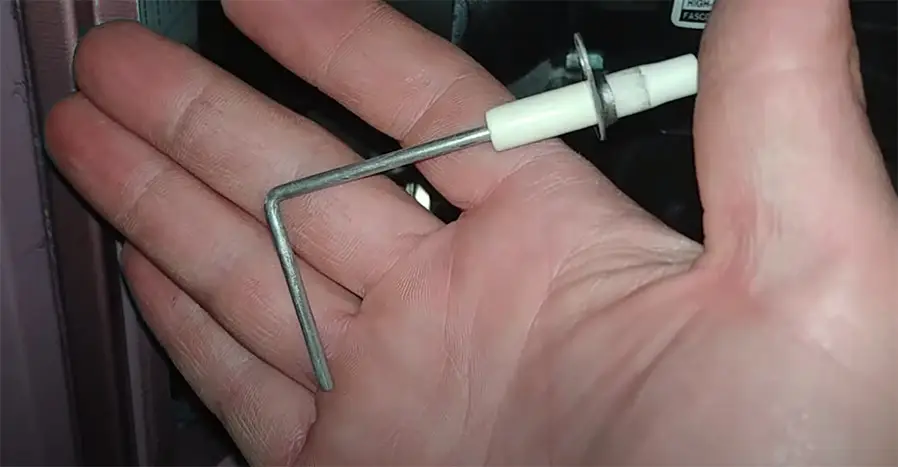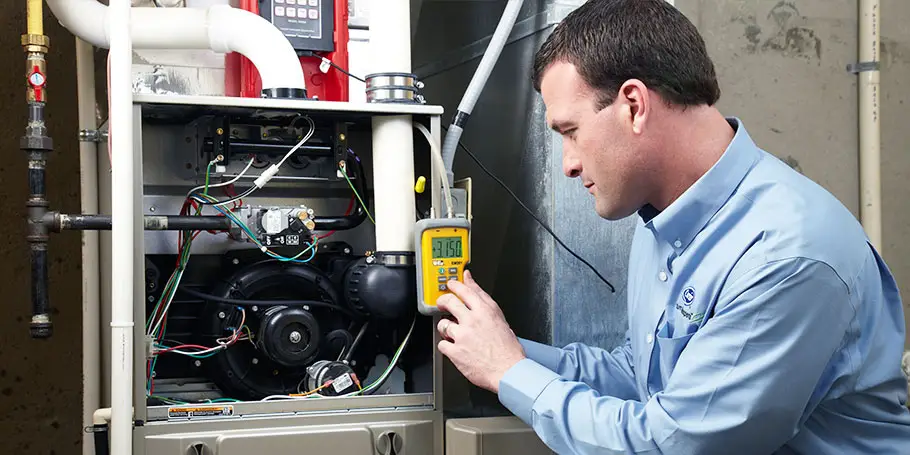Cleaning your furnace flame sensor is a simple yet essential maintenance task that can resolve common furnace issues, such as a system that won’t stay lit. A dirty flame sensor can prevent your furnace from functioning correctly, leading to heating interruptions during the cold season. This guide will help you understand the importance of cleaning a flame sensor, recognize the signs of a dirty flame sensor, and provide step-by-step instructions for DIY furnace flame sensor cleaning.

Why Is Cleaning a Furnace Flame Sensor Important?
The flame sensor is a small metal rod located near the burner assembly in your furnace. Its job is to detect whether a flame is present when the burners are on. If the flame sensor becomes dirty or covered in soot, it cannot accurately detect the flame, which may cause the furnace to shut off as a safety precaution. Regular cleaning offers several benefits:
- Prevents Ignition Issues: A dirty sensor may cause the furnace not to ignite or stay lit.
- Improves Efficiency: Keeping the sensor clean ensures proper operation, reducing energy waste.
- Enhances Safety: A functional sensor prevents gas leaks by shutting off the system when no flame is detected.
- Extends Furnace Lifespan: Regular cleaning and maintenance reduce wear and tear on components.
Signs of a Dirty Flame Sensor
Recognizing when your flame sensor needs cleaning can save you from costly repairs and system downtime. Common signs include:
- Furnace cycles on and off frequently.
- Furnace does not ignite, even when the thermostat calls for heat.
- A noticeable delay in ignition.
- Visible buildup of soot or debris on the flame sensor.
- Furnace shuts down shortly after turning on.
If you notice these symptoms, it’s time to clean the flame sensor.
Cleaning a Furnace Flame Sensor: Step-by-Step Instructions
1. Turn Off the Furnace
For safety, switch off the power to your furnace at the circuit breaker. This prevents accidents while working on the unit.
2. Locate the Flame Sensor
Refer to your furnace’s manual to identify the flame sensor. It’s usually a thin, metallic rod near the burner assembly.
3. Remove the Flame Sensor
- Open the furnace panel to access the burner assembly.
- Unscrew the flame sensor carefully using a screwdriver.
4. Clean the Flame Sensor
- Use a fine abrasive pad or emery cloth to gently clean the sensor.
- Remove soot and debris without scratching or damaging the metal surface.
5. Inspect for Damage
- Check the sensor for signs of corrosion or physical damage.
- If the sensor is damaged, consider replacing it.
6. Reinstall the Flame Sensor
- Secure the sensor back in its original position.
- Tighten screws carefully, avoiding overtightening.
7. Close the Furnace Panel
Ensure the furnace panel is securely fastened to protect internal components.
8. Restore Power
Turn the furnace’s power back on at the circuit breaker.
9. Test the Furnace
- Set your thermostat to call for heat.
- Observe the furnace to ensure it ignites and stays lit.
Furnace Maintenance Tips for Long-Term Efficiency
Cleaning the flame sensor is just one part of a comprehensive furnace maintenance routine. To ensure reliable operation, follow these additional tips:
- Replace Air Filters: Dirty filters reduce airflow and strain the furnace. Replace them every 1–3 months.
- Inspect Ductwork: Ensure there are no leaks or blockages in the ducts.
- Clean Burners and Blower Components: Regularly clean these components to maintain efficiency.
- Check Thermostat Settings: Ensure your thermostat is functioning properly and set to the desired temperature.
- Schedule Professional Maintenance: Have a qualified HVAC technician perform a seasonal furnace check-up.
Flame Sensor Troubleshooting
If cleaning the flame sensor doesn’t resolve your furnace issues, the problem could be more complex. Here are some potential causes:
- Faulty Flame Sensor: If cleaning doesn’t help, the sensor might need replacement.
- Damaged Wiring: Loose or damaged wiring can interfere with the flame sensor’s operation.
- Gas Valve Issues: If the gas valve isn’t functioning correctly, the burners may not ignite.
- Control Board Problems: Malfunctioning control boards can fail to recognize flame sensor signals.
In such cases, consult a professional for flame sensor troubleshooting and repairs.
How to Fix a Faulty Flame Sensor
- Inspect Connections: Ensure the sensor is securely connected to the furnace.
- Replace the Sensor: If the sensor is corroded or damaged, replace it with a compatible part.
- Check System Components: Inspect other components, such as the gas valve and control board, for issues.
When to Call an Expert
While DIY furnace flame sensor cleaning is a manageable task, some situations require professional assistance:
- Persistent ignition issues despite cleaning.
- Visible damage to the flame sensor or other components.
- Unusual noises or odors from the furnace.
At Four Elements Service Heating & Cooling, our certified technicians provide comprehensive furnace maintenance, including flame sensor cleaning, inspections, and repairs.
Conclusion:
For thorough maintenance and expert care, schedule a professional check-up with Four Elements Service Heating & Cooling. Reliable heating starts with a well-maintained furnace, so don’t wait—book your seasonal service today and enjoy peace of mind all winter long.
- Importance of Cleaning a Furnace Flame Sensor: Regular cleaning of the flame sensor prevents ignition problems, improves efficiency, enhances safety, and extends the furnace’s lifespan by ensuring accurate flame detection.
- Signs of a Dirty Flame Sensor: Furnace cycling issues, failure to ignite, visible soot, or frequent shutdowns indicate it’s time to clean the flame sensor.
- Step-by-Step Cleaning Process: Turn off power, locate and remove the sensor, clean it gently with an abrasive pad, inspect for damage, reinstall, and then test the furnace for proper operation.
- Additional Maintenance Tips: Replace air filters regularly, inspect ductwork, clean burners, check thermostat settings, and schedule professional check-ups for optimal furnace performance.
- Troubleshooting and Professional Help: If cleaning doesn’t fix issues, consider sensor replacement, check wiring and other components, and contact a professional for complex repairs or persistent problems.
Why is it important to clean the furnace flame sensor regularly?
Regular cleaning of the furnace flame sensor prevents ignition issues, improves efficiency, enhances safety by preventing gas leaks, and extends the lifespan of the furnace by ensuring proper flame detection.
What are the signs that my furnace’s flame sensor needs cleaning?
Signs include frequent cycling on and off, failure to ignite even when calling for heat, visible soot or debris on the sensor, and the furnace shutting down shortly after startup.
What additional maintenance can help keep my furnace running efficiently?
Additional tips include replacing air filters regularly, inspecting ductwork for leaks, cleaning burners and blower components, checking thermostat settings, and scheduling professional maintenance annually.
When should I call a professional if my furnace isn’t working properly?
Call a professional if you experience persistent ignition issues despite cleaning, notice damage to the flame sensor or other components, hear unusual noises, or smell odors from the furnace.



